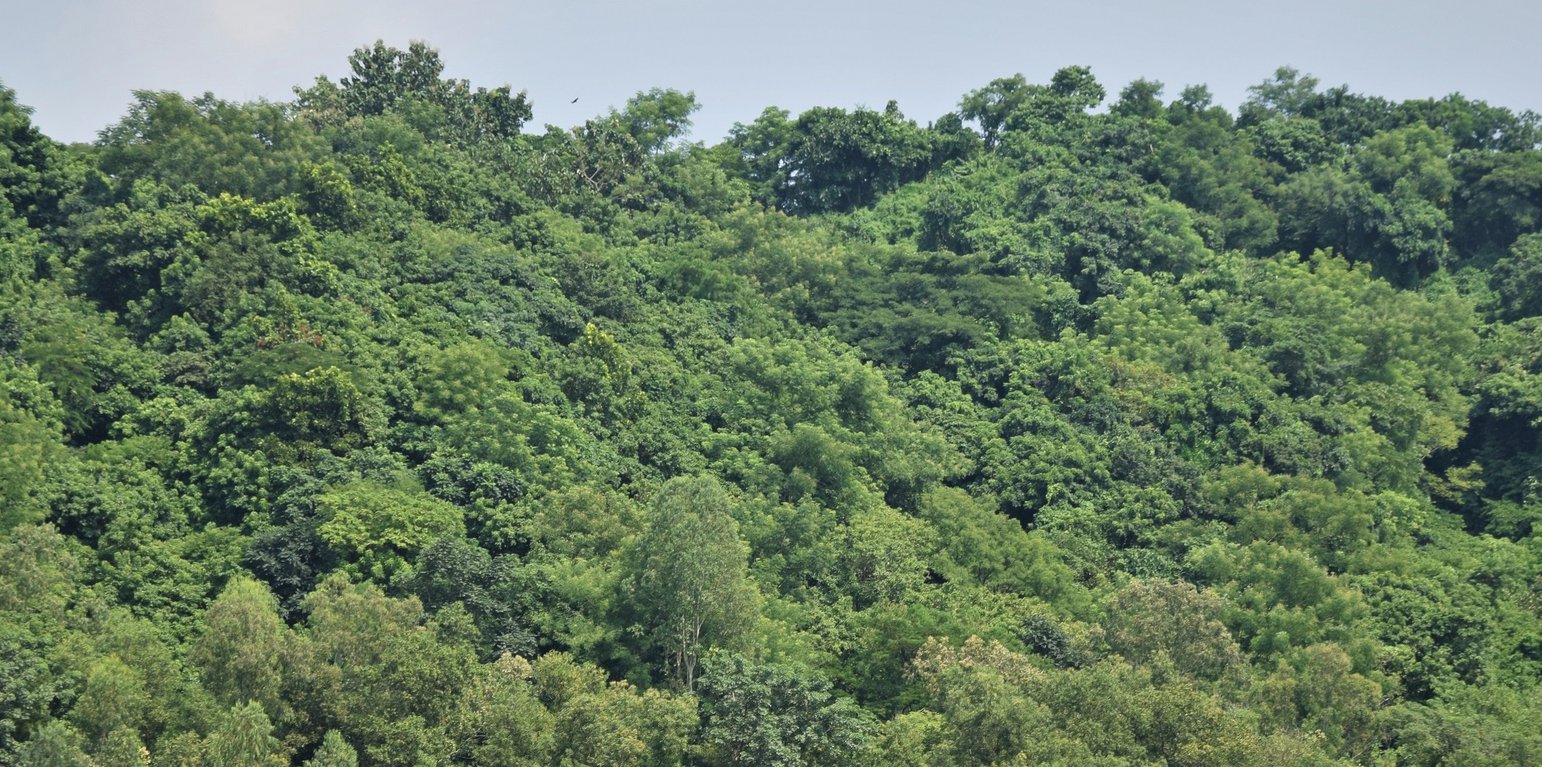



Mixed-species plantations can play an important role in regulating land degradation and sustainable management of degraded forest areas. Among the various forestry practices, planting fast-growing species (used in mono-culture plantation) with slow-growing and indigenous species has a positive long-term impact on forest land management. Mixed species tree plantations have the potential to improve forest soils, forest cover and biological diversity, and facilitate forest succession in degraded ecosystems. In addition to carbon accumulation, mixed plantations also increase understory plant regeneration, and in some cases, reduce diseases and pests infestation in plantation. This technology is applied in hill-forest areas in Bangladesh for preventing erosion and risk of landslides, and to provide a sustainable supply of timber and fuel wood.
The plantation site located in Hathazari area of Chittagong division and inside the periphery of University of Chittagong. The landform is hill slope with 16-30% slopes on average. The annual rainfall is around 2500 mm and the soil texture is loamy to silty. The species used at the Hathazari plantation site were: Garjan (Dipterocarpus turbinatus), Telsur (Hopea odorata), Chapalish (Artocarpus chaplasha), Pithraj (Aphanamixis polystachya), and Minjiri (Senna siamea). All are deep-rooted, slow growing indigenous plant species with a felling rotation of 25-30 years. The Dipterocarpus species grows well on top of hill whereas Artocarpus chaplasha and Hopea odorata grows well in mid slope. Aphanamixis polystachya and Senna siamea perform well in bottom layer of hill. The sequence has positive mutual effects on tree growing. The plantation was established and managed by the authority of University of Chittagong (owner of the land) in 1990 with 2500 trees planted per hectare area (spacing interval 2m x 2m). The average slope of the site is around 30%. Before reforestation, the land was degraded and unproductive. As only a few scattered trees grow due to a huge demand of fuel wood the resulting insufficient coverage by tree crowns frequently led to landslides in the area. The local communities are only allowed to collect the dead branches as fuel and other non-wood forest products like honey, mushrooms, fruits and fodders from the plantation site.
The major activities required to establish the plantation are: seed collection, nursery preparation, site preparation, pit preparation, planting, tying of plants to stick for support, application of fertilizer, compost and biocide. After first establishment, the plantation needs ongoing maintenance activities such as weeding, refilling of vacancies, thinning, pruning, application of fertilizers and biocides (if necessary) and cutting of climbers. The timber species undergo a variety of thinning practices before the entire stand reaches maturity. These trees are progressively thinned out to provide fuel wood and timber, while allowing room for the natural regeneration of native species. The university authority carried out the maintenance activities and such a practice is advantageous to adjacent local communities since it meets their fuel wood demand.
Prior to establishment of the plantation, the area was barren and unproductive, and was hardly a suitable habitat for wildlife. More critically, during the annual monsoons, landslides were a regular phenomenon. The natural regeneration of the deforested area was additionally hampered by incendiary fires set by local communities for agricultural purpose. After the establishment of the plantation and the subsequent improvement of forest/land cover, it is now a habit for various species of bird, monkeys, deer, wild pigs, and rabbits. Furthermore, in humid tropical regions like Bangladesh, the frequent litterfall from indigenous plant species in mixed plantations constitutes the bulk of soil organic matter, and improved nutrient availability and soil fertility.
Though the mixed plantation required intensive management in the early stage, the example of this plantation shows that the mixed plantation with indigenous species is worthwhile and a degraded area can fully recover after 20 years. However, illicit felling of timber trees and illegal removal of litters from the ground for fuel by the local communities are still remains as a management challenge. The practice retains ecological integrity and enhances human well-being (through ‘cultural’ ecosystem services such as aesthetic beauty, ecotourism etc.) and livelihood (timber, fuelwood, non-timber forest products) as well.
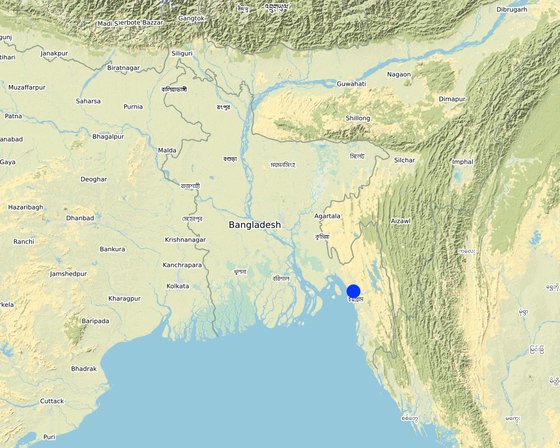
Localização: Hathazari, Chittagong division, Bangladesh
Nº de sites de tecnologia analisados: Local único
Difusão da tecnologia: Uniformemente difundida numa área (approx. 0,1-1 km2)
Em uma área permanentemente protegida?: Não
Data da implementação: 1990
Tipo de introdução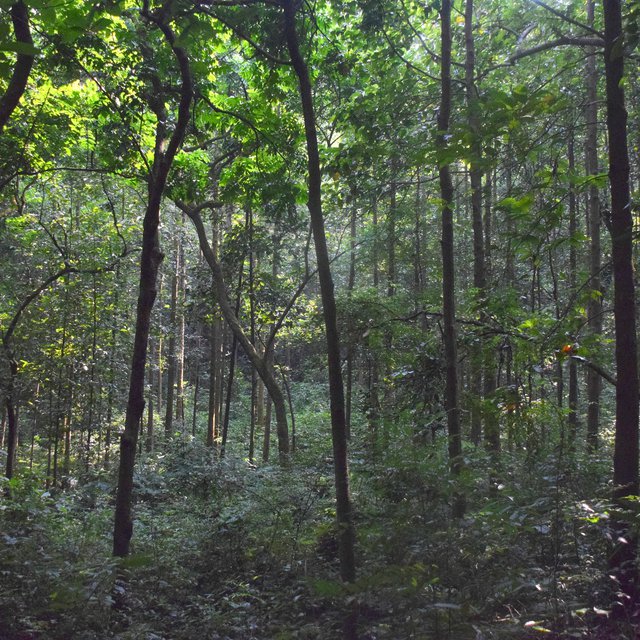
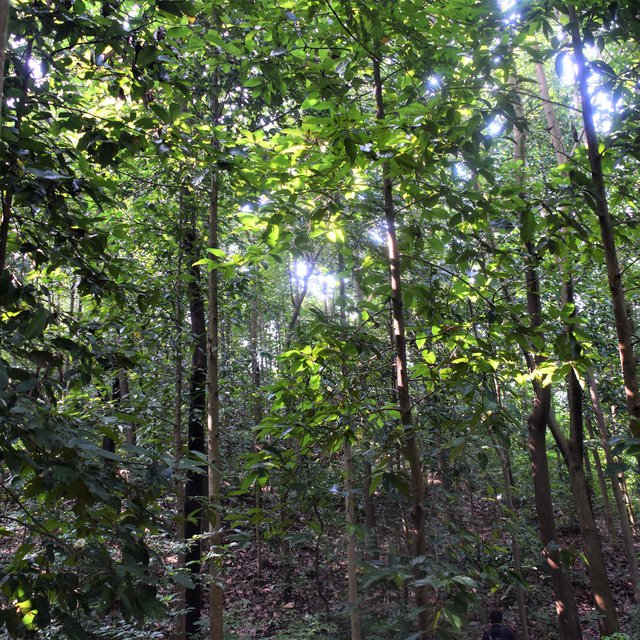



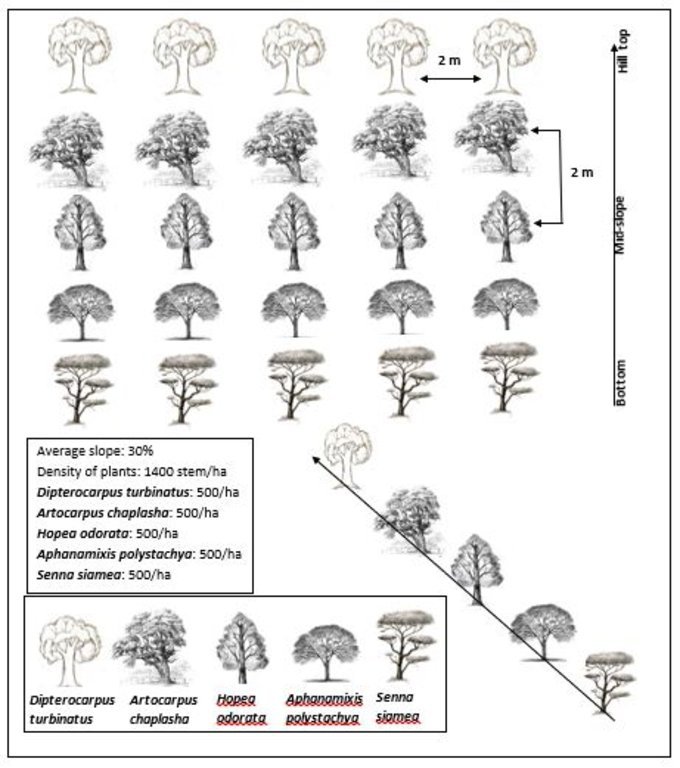
| Especifique a entrada | Unidade | Quantidade | Custos por unidade (BDT) | Custos totais por entrada (BDT) | % dos custos arcados pelos usuários da terra |
| Mão-de-obra | |||||
| Nursery work | Person day | 32,0 | 500,0 | 16000,0 | 100,0 |
| Site preparation | Person day | 20,0 | 500,0 | 10000,0 | 100,0 |
| Plantation | Person day | 40,0 | 500,0 | 20000,0 | 100,0 |
| Equipamento | |||||
| Polybags | Pieces | 3000,0 | 1,0 | 3000,0 | 100,0 |
| Loamy soil | Cubic meter | 6,0 | 400,0 | 2400,0 | 100,0 |
| Bamboo | Pieces | 7,0 | 600,0 | 4200,0 | 100,0 |
| Stick | Pieces | 2600,0 | 2,0 | 5200,0 | 100,0 |
| Rope | Lump sum | 1,0 | 200,0 | 200,0 | 100,0 |
| Bucket, Spade, Knife | Lump sum | 1,0 | 1000,0 | 1000,0 | 100,0 |
| Material vegetal | |||||
| Seeds | Kg | 2,0 | 500,0 | 1000,0 | 100,0 |
| Fertilizantes e biocidas | |||||
| Urea | Kg | 12,0 | 35,0 | 420,0 | 100,0 |
| TSP | Kg | 12,0 | 40,0 | 480,0 | 100,0 |
| MoP | Kg | 12,0 | 30,0 | 360,0 | 100,0 |
| Compost | Kg | 3200,0 | 4,0 | 12800,0 | 100,0 |
| Biocide | Lump Sum | 1,0 | 200,0 | 200,0 | 100,0 |
| Material de construção | |||||
| Signboard (to demarcate plantation area, number of species planted and year of plantation) | Pieces | 1,0 | 1000,0 | 1000,0 | 100,0 |
| Custos totais para a implantação da tecnologia | 78'260.0 | ||||
| Custos totais para o estabelecimento da Tecnologia em USD | 942.89 | ||||
| Especifique a entrada | Unidade | Quantidade | Custos por unidade (BDT) | Custos totais por entrada (BDT) | % dos custos arcados pelos usuários da terra |
| Mão-de-obra | |||||
| 1st year weeding and climber cutting | person-day | 21,0 | 500,0 | 10500,0 | 100,0 |
| 2nd year weeding, climber cutting and thinning | person-day | 21,0 | 500,0 | 10500,0 | 100,0 |
| 3rd year weeding, climber cutting, thinning and pruning | person-day | 12,0 | 500,0 | 6000,0 | 100,0 |
| Vacancy filling, fertilizer and compost application 2 times | person-day | 30,0 | 500,0 | 15000,0 | 100,0 |
| Material vegetal | |||||
| Seedlings | pieces | 500,0 | 10,0 | 5000,0 | 100,0 |
| Fertilizantes e biocidas | |||||
| Urea, TSP, MoP, Compost | Lump sum | 1,0 | 1000,0 | 1000,0 | 100,0 |
| Custos totais para a manutenção da tecnologia | 48'000.0 | ||||
| Custos totais de manutenção da Tecnologia em USD | 578.31 | ||||
honey, mushrooms and fruits for wildlife
mixed plantation is more pest resistant
Along with timber these mixed plantation yields oil, fruits, fodder, fuel and herbal medicines
The degraded land which was vulnerable for landslides now convert to a native plantation area
Increase of the stream flow that used for irrigation in adjacent crop lands
tourism promoted in the area
The workload increased at the initial stage but in the long run it will protect from the hassle of landslides
tourism increased in the area
water holding capacity of soil increased due to the increase organic matter in the soil and canopy coverage
aquifer recharge positively influenced due to the canopy coverage and reduction of surface runoff
as the plantation established and maintained with native plant species, the alien invasive plant species are not able to spread much here
The before bare, unproductive and degraded land now supports habitat for various wildlife
downstream siltation decreased due to reduction of surface runoff